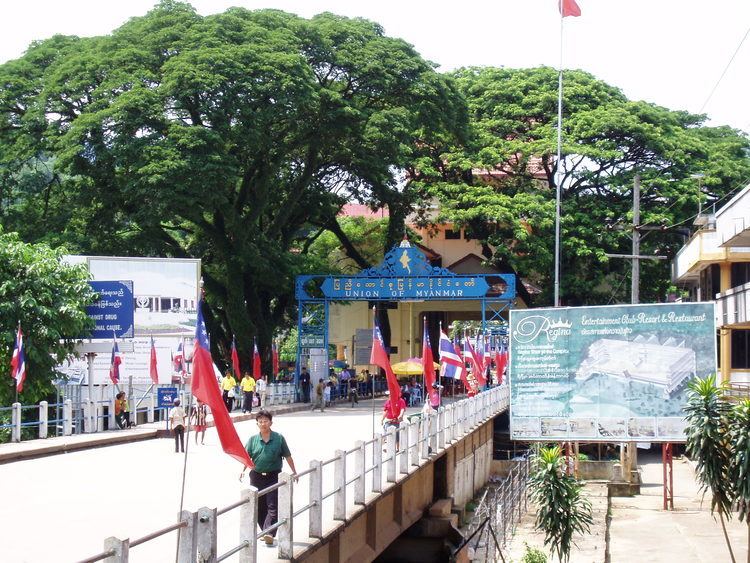Country Thailand Time zone ICT (UTC+7) Geocode 5709 Province Chiang Rai Province | Seat Mae Sai Postal code 57130 Area 285 km² | |
 | ||
Mae Sai (Thai: แม่สาย, [mɛ̂ː sǎːj]; Shan: မႄႈသၢႆ, [mɛ.sʰǎj]) is the northernmost district (amphoe) of Chiang Rai Province in northern Thailand. The town of Mae Sai is a major border crossing between Thailand and Myanmar. Asian Highway Network AH2 (Thailand Route 1 or Phahonyothin Road) crosses the Mae Sai River to the town Tachileik in Myanmar.
Contents
Map of Mae Sai District, Chiang Rai, Thailand
One-day passes for non-Burmese nationals crossing into Myanmar are issued at Myanmar customs in Tachileik. Passports are confiscated and a temporary travel permit is issued; the permit is exchanged for the traveler's passport upon crossing back into Thailand. (No longer available as of 2016.) Since the changes in Thai immigration policy since March 2016 crossing this border as a foreign national is highly depended on individual Thai customs officers as they have discretion. Visa runs are no longer available as of May 2016.
Mae Sai is 259 km north of Chiang Mai, 61 km north of Chiang Rai, and 850 km north of Bangkok.
Geography
Neighboring districts are (from the east clockwise) Chiang Saen, Mae Chan and Mae Fa Luang. To the north is Myanmar, separated by the Mae Sai River and the Ruak River. The westernmost part of the district is dominated by the hills of the Daen Lao Range, the most important one is the Doi Tung with the Wat Phra That Doi Tung temple on top. Doi Nang Non is another notable mountain in Mae Sai District.
History
The minor district (King Amphoe) Mae Sai was created on 1 March 1939, when the two tambon Mae Sai and Pong Pha were split off from Chiang Saen district. The area was upgraded to a full district on May 1, 1950.
Administration
The district is subdivided into eight subdistricts (tambon), which in turn are further subdivided into 92 villages (muban). There are two subdistrict municipalities (thesaban tambon) within the district - Mai Sai itself covering parts of the tambon Mae Sai and Wiang Phang Kham, and Huai Khrai covering parts of the tambon Huai Khrai. There are further eight Tambon administrative organizations (TAO).
The geocode 7 is not used.
